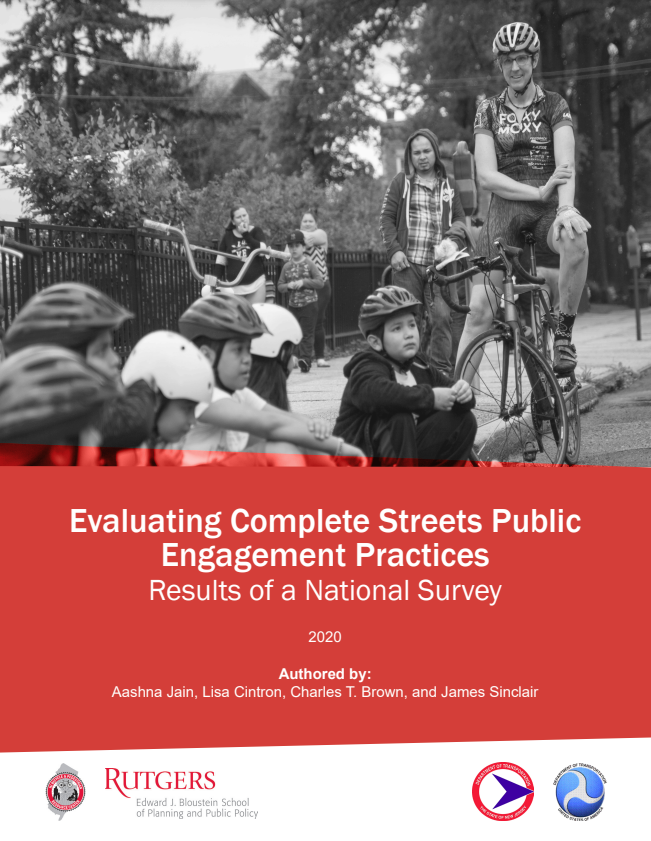Public outreach and engagement is the process of incorporating stakeholder/community feedback and participation in planning, program and policy efforts. There can be multiple levels of public outreach and engagement, comprised of “informing” or “educating” citizens and “support building” to “empowering” citizens to voice their concerns and feedback. As such, public engagement can constitute a collaborative effort to decision-making and implementation, as well as a one-way flow of information depending on the end goal. It can take on a variety of forms ranging from in-person workshops to virtual meetings and design charrettes to temporary demonstration projects.
Complete Streets are streets designed for all users, all modes of transportation, and all ability levels. They balance the needs of drivers, pedestrians, bicyclists, transit riders, emergency responders, and carriers of goods based on local context (Figure 1). Public outreach and engagement in Complete Streets implementation can mean anything from collecting input during the planning process to educating users on how to safely share the roadway. It is an essential part of Complete Streets policymaking and implementation because changes in road design can improve the safety for different users and travel modes, though it is often not enough to eliminate crashes. Public engagement also helps ensure that all voices are heard in the design, planning, operation, and maintenance of Complete Streets.
In 2020, the New Jersey Bicycle and Pedestrian Resource Center (NJ BPRC) partnered with Smart Growth America (SGA) as part of a national survey of planning professionals, policymakers, Complete Streets advocates, and concerned community members, in both the public and private sectors, to reflect on the level of outreach and engagement that is pursued in accomplishing Complete Streets outcomes, as well as initiatives that have been implemented by these professionals in response to the COVID-19 pandemic. The purpose of this research is to collect information about effective and notable Complete Streets outreach, educational, and engagement activities as conducted by professionals across the country.
Findings demonstrated a wide range of approaches to engagement with different goals, methods, target audiences, partner organizations, and scopes, in addition to the limitations and challenges faced by various organizations. A potential next step in this research is to conduct an in-depth study of the best practices and case study examples discussed in this report.
Read full report: Evaluating Complete Streets Public Engagement Practices: Results of a National Survey (2020)
New Jersey Bicycle and Pedestrian Resource Center. (2020). Evaluating Complete Streets Public Engagement Practices: Results of a National Survey. Retrieved from https://njbikeped.org/portfolio/case-studies-on-increasing-bicycling-walking-through-cpted/

